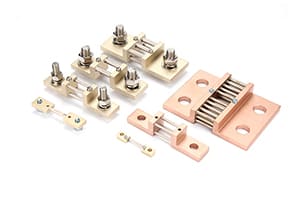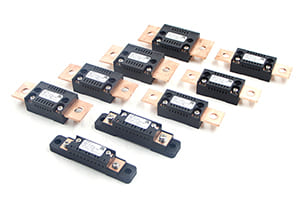
I've seen countless battery failures due to poor current monitoring. Without accurate measurement, even the most advanced battery systems can fail prematurely or become dangerous.
DC shunts are vital components in battery management systems (BMS), providing precise current measurement for charging, discharging, and protection functions. They ensure battery safety and longevity through continuous accurate monitoring.
Having worked with battery manufacturers for over three decades, I've witnessed the evolution of battery management systems and their increasing reliance on precise current measurement. Modern batteries, especially in electric vehicles and renewable energy systems, require extremely accurate current monitoring. Let me explain how DC shunts have become indispensable in modern battery management and why their selection is crucial for system performance.
How Do DC Shunts Measure Battery Charging Current?
Every battery manufacturer I consult with faces the same challenge: ensuring accurate charging current measurement. Imprecise measurements can lead to overcharging and reduced battery life.
DC shunts excel at charging current measurement by converting high charging currents into measurable voltage signals. They maintain accuracy levels up to ±0.1%, ensuring optimal charging control and battery protection.

The role of DC shunts in charging current measurement is both critical and complex. Through my experience working with various battery systems, I've developed specialized shunt designs that optimize charging current monitoring. Our shunts use advanced alloy compositions that maintain stable resistance across wide temperature ranges, ensuring reliable measurements during charging cycles.
We've incorporated innovative features like temperature compensation and specialized mounting techniques to minimize measurement errors. These designs account for factors such as thermal EMF effects and electromagnetic interference, which can significantly impact charging current measurement accuracy. Our latest shunt models include integrated temperature sensors and enhanced EMI shielding, making them ideal for modern fast-charging applications.
Why Are DC Shunts Essential for Battery Protection?
In my years of working with battery systems, I've seen how inadequate protection can lead to catastrophic failures. Precise current monitoring is the foundation of effective battery protection.
DC shunts provide essential protection by enabling accurate current monitoring and rapid fault detection. They help prevent overcharging, over-discharging, and short circuits while ensuring safe battery operation.

Battery protection requires DC shunts to perform flawlessly under various conditions. Our protection-focused shunts incorporate several innovative features developed through extensive research and customer feedback. The design includes enhanced voltage isolation, rapid response characteristics, and specialized mounting systems that maintain measurement accuracy during thermal cycling.
We've developed specific shunt models for different battery protection requirements, each optimized for its intended application. These designs include advanced fault detection capabilities and can respond to current anomalies within milliseconds. The shunts also feature built-in temperature monitoring capabilities to ensure safe operation under all conditions.
How Do DC Shunts Monitor Battery Discharge Rates?
Managing battery discharge rates is crucial for system longevity. Throughout my career, I've helped many clients optimize their discharge monitoring systems to extend battery life.
DC shunts accurately monitor battery discharge rates by providing precise current measurements during all load conditions. Their high accuracy ensures proper load management and prevents excessive discharge rates.

Discharge rate monitoring requires extremely accurate current measurement across varying load conditions. Our discharge monitoring shunts feature specialized designs that maintain accuracy even during rapid current changes. We use proprietary alloy compositions that ensure stable resistance values under high-current discharge conditions.
The latest designs incorporate advanced heat dissipation features to prevent measurement drift during extended high-current operation. These shunts also include enhanced EMI protection and specialized mounting options that maintain accuracy in high-vibration environments. Our continuous innovation in this area has led to shunts that can accurately monitor discharge rates from milliamps to thousands of amps.
Conclusion
DC shunts are fundamental to effective battery management systems. Through precise current measurement, they enable proper charging control, ensure battery protection, and monitor discharge rates accurately. As battery technology continues to advance, the role of DC shunts becomes increasingly critical. Their accuracy, reliability, and performance directly impact battery life, safety, and system efficiency. Based on my extensive experience in the field, I can confidently say that choosing the right DC shunt is crucial for any battery management system aiming for optimal performance and longevity.
















